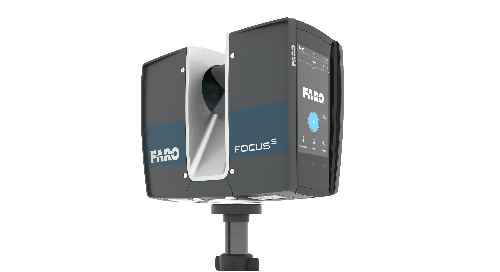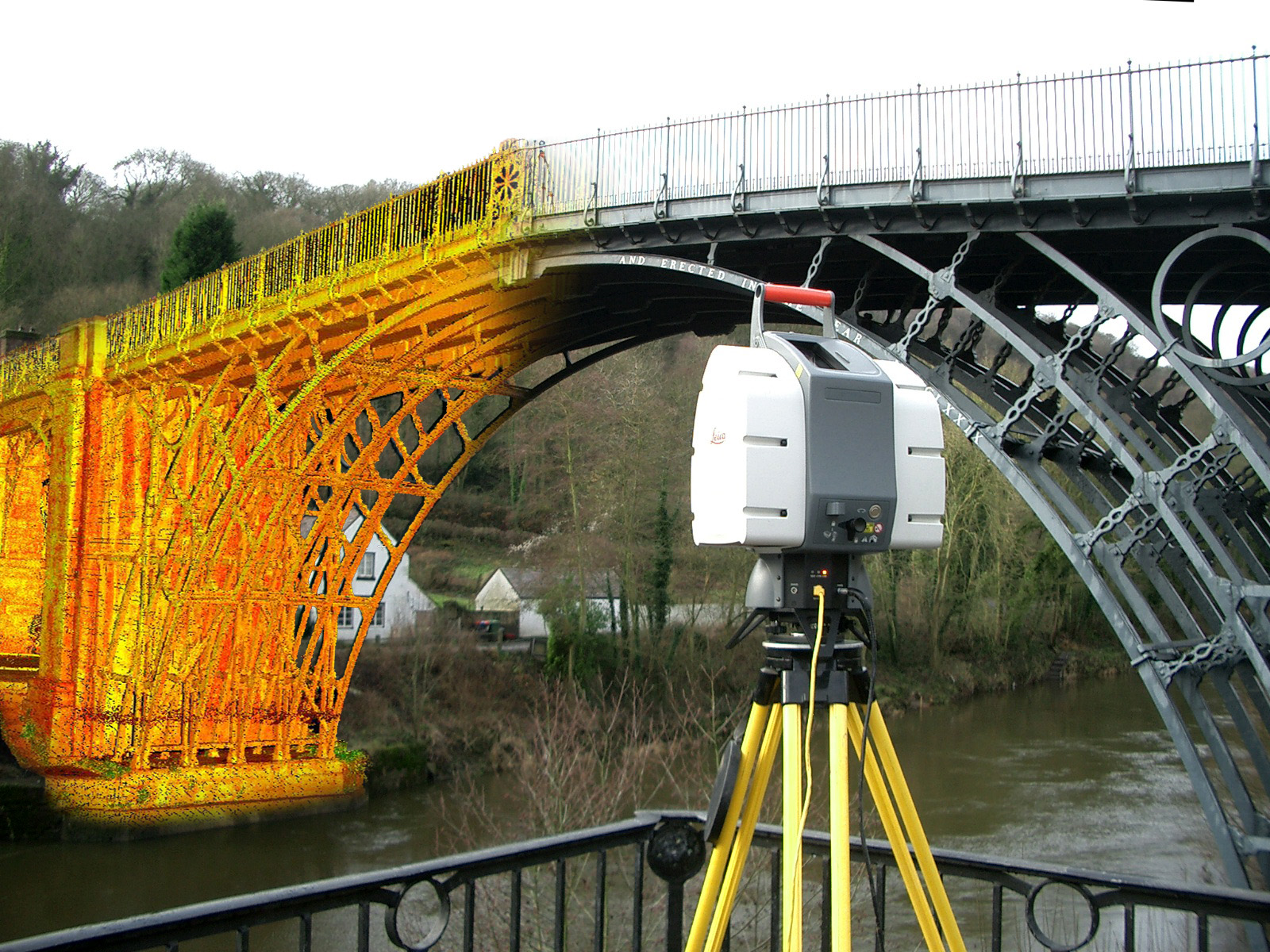Enhancing Manufacturing Processes: The Influence of 3D Laser Scanning on Quality Assurance
3D laser scanning technology is transforming quality assurance in production. By supplying exact measurements and high-resolution information, it enables producers to recognize inconsistencies from specs easily. This improvement not just streamlines evaluation procedures but likewise enhances functional effectiveness. 3D Scanning. However, the application of this innovation includes its own collection of difficulties. Discovering these elements reveals the broader effects for markets and the future landscape of manufacturing

Understanding 3D Laser Scanning Innovation
3D laser scanning modern technology has progressed substantially in current years, its fundamental principle remains straightforward: catching the accurate geometry of items making use of laser light beams. This modern technology utilizes laser light to determine ranges between the scanner and different points on an object's surface. The data collected is then processed to create a comprehensive 3D design, properly reflecting the measurements and shapes of the checked item.
Commonly, 3D laser scanners can be classified into two main types: get in touch with and non-contact scanners. Get in touch with scanners physically touch the object to gather dimensions, whereas non-contact scanners make use of laser light beams to catch data from a range. The adaptability of this innovation enables its application across numerous sectors, including architecture, construction, and production. Its ability to produce high-resolution designs helps with high quality control, reverse engineering, and fast prototyping, ultimately improving design precision and effectiveness in production procedures.
Benefits of 3D Laser Scanning in Manufacturing
As manufacturers look for to improve effectiveness and precision in their processes, the advantages of 3D laser scanning have come to be increasingly noticeable. This ingenious modern technology enables for rapid and very exact measurements of intricate geometries, significantly reducing the time needed for high quality checks. By capturing in-depth data, makers can identify inconsistencies early in the manufacturing process, consequently minimizing waste and remodel prices.
3D laser scanning helps with far better layout validation, allowing designers to contrast as-built conditions with original specs. This capacity assures that any variances are without delay dealt with, improving general product top quality. Furthermore, the technology supports the development of electronic twins, which can be made use of for simulations and process optimizations. Because of this, manufacturers not just increase their operational performance but additionally enhance their competitive advantage in the marketplace. Overall, the integration of 3D laser scanning represents a transformative step toward achieving higher criteria in making top quality control.
Integration of 3D Laser Scanning Into Quality Assurance
Integrating 3D laser scanning into quality assurance procedures boosts the precision and efficiency of assessments throughout production. This technology enables manufacturers to capture detailed, high-resolution information of assemblies and components, enabling specific measurements and comparisons versus layout specs. By utilizing 3D laser scanning, organizations can identify deviations from resistances extra effectively, which is essential for keeping item integrity.

Real-World Applications and Study
Real-world applications of 3D laser scanning in producing demonstrate its transformative effect throughout different markets. As an example, aerospace companies use this modern technology to perform exact assessments of elements, ensuring they meet rigid security requirements. A noteworthy case entailed a leading airplane producer that employed try this site 3D laser scanning to simplify its top quality control processes, significantly lowering examination times and errors.
In the automobile field, makers have applied laser scanning to produce digital doubles of their cars, enabling real-time adjustments throughout production. One auto firm reported a 30% decrease in rework expenses after incorporating this innovation right into their production line.
In the customer goods sector, business are making use of 3D laser scanning for rapid prototyping, permitting for quicker iterations and improved item designs. These applications show just how 3D laser scanning not just improves precision yet likewise boosts efficiency and advancement throughout multiple manufacturing domain names.
Conquering Obstacles in Execution
Implementing 3D laser scanning in making presents a straight from the source number of obstacles that organizations should browse to completely understand its advantages. One considerable obstacle is the initial expense of tools and software program, which can hinder companies from embracing this modern technology. In addition, integrating 3D laser scanning into existing process needs getting over resistance to transform amongst employees, necessitating detailed training programs to guarantee proficiency. Data management also positions a difficulty, as the high volume of info produced by 3D scanning need to be successfully refined and assessed to obtain workable insights. Additionally, compatibility problems with tradition systems may hinder seamless integration, requiring possible upgrades or alterations. Resolving these obstacles is crucial for manufacturers intending to improve quality assurance and optimize manufacturing procedures. By establishing clear strategies for training, financial investment, and data administration, companies can minimize these challenges and release the transformative potential of 3D laser scanning in their procedures.
Future Patterns in 3D Laser Scanning for Manufacturing
As making proceeds to evolve, the assimilation of 3D laser scanning with boosted automation is expected to change manufacturing processes. Boosted data analytics will certainly play a crucial role in boosting and maximizing process quality assurance. These fads highlight the potential for better effectiveness and precision in making atmospheres.

Boosted Automation Assimilation
The integration of automation in manufacturing has actually been gradual, the future of 3D laser scanning is poised to accelerate this trend significantly. As producing processes end up being increasingly complex, the demand for precise, real-time measurements grows. 3D laser scanning technology provides automated information capture, decreasing labor expenses and minimizing human error. This combination enables makers to simplify top quality control procedures, enabling rapid discovery of deviations in production. Furthermore, the positioning of 3D laser scanning with robotics and automated systems facilitates smooth procedures, enhancing total performance. As manufacturers embrace these advanced modern technologies, they can anticipate better accuracy and productivity, positioning themselves competitively in a quickly advancing market. The harmony in between automation and 3D laser scanning marks a substantial jump forward in Learn More producing advancement.
Enhanced Information Analytics
The combination of automation has actually led the way for developments in data analytics within the domain of 3D laser scanning. Suppliers are significantly leveraging sophisticated formulas and artificial intelligence strategies to evaluate substantial datasets produced by laser scans. This boosted data analytics capacity enables for real-time surveillance of making processes, making it possible for the identification of inconsistencies and problems better than typical methods. Anticipating analytics can foresee prospective problems, significantly minimizing downtime and enhancing general performance. Furthermore, the capability to envision data in three dimensions gives much deeper insights right into manufacturing workflows, promoting far better decision-making. As 3D laser scanning technology proceeds to advance, the role of data analytics will end up being progressively essential in driving innovation and maintaining competitive benefit in production.
Often Asked Concerns
What Industries Benefit one of the most From 3D Laser Scanning?
The industries that benefit most from 3D laser scanning consist of production, building and construction, aerospace, auto, and medical care. These markets utilize the innovation for precision dimensions, quality control, and efficient layout procedures, significantly improving overall functional effectiveness.
Exactly How Does 3D Laser Scanning Contrast to Standard Measurement Methods?
3D laser scanning supplies greater precision and speed contrasted to standard measurement methods. It records in-depth geometries rapidly, reducing human mistake and promoting much better analysis, which inevitably improves overall quality assurance in different industries.
What Is the Price of Carrying Out 3D Laser Scanning Innovation?
The price of carrying out 3D laser scanning technology differs considerably, typically ranging from $10,000 to $100,000, relying on software application, training, and tools. Organizations must consider these expenses versus prospective performance and quality renovations.
Exist Certain Software Demands for 3D Laser Scanning?
Yes, 3D laser scanning calls for specific software application, consisting of data processing and modeling applications. Typical selections encompass CAD software application, factor cloud handling tools, and specialized applications that help with the assimilation and analysis of checked information for perfect results.
How much time Does a Typical 3D Laser Scanning Process Take?
A normal 3D laser scanning procedure can take anywhere from a couple of minutes to numerous hours, relying on factors like the size of the object, complexity of the atmosphere, and needed degree of information for precision.
3D laser scanning modern technology is transforming quality control in manufacturing. 3D laser scanning innovation has actually advanced considerably in recent years, its essential principle continues to be uncomplicated: recording the precise geometry of objects using laser beams. Integrating 3D laser scanning into quality control processes enhances the accuracy and efficiency of inspections throughout manufacturing (3D Scanning). 3D laser scanning technology offers automated data capture, reducing labor prices and decreasing human mistake. The expense of carrying out 3D laser scanning innovation varies significantly, usually ranging from $10,000 to $100,000, depending on software application, training, and equipment